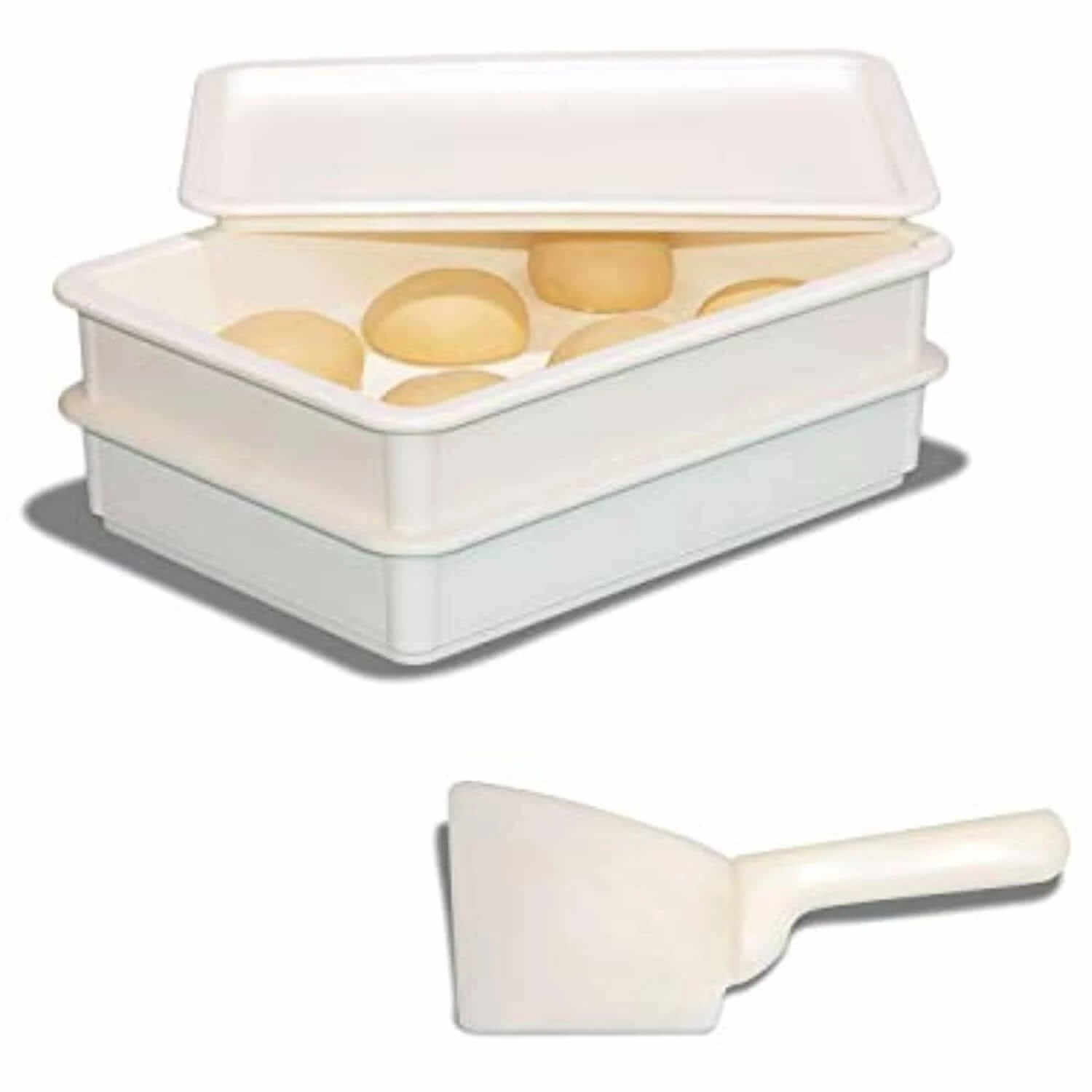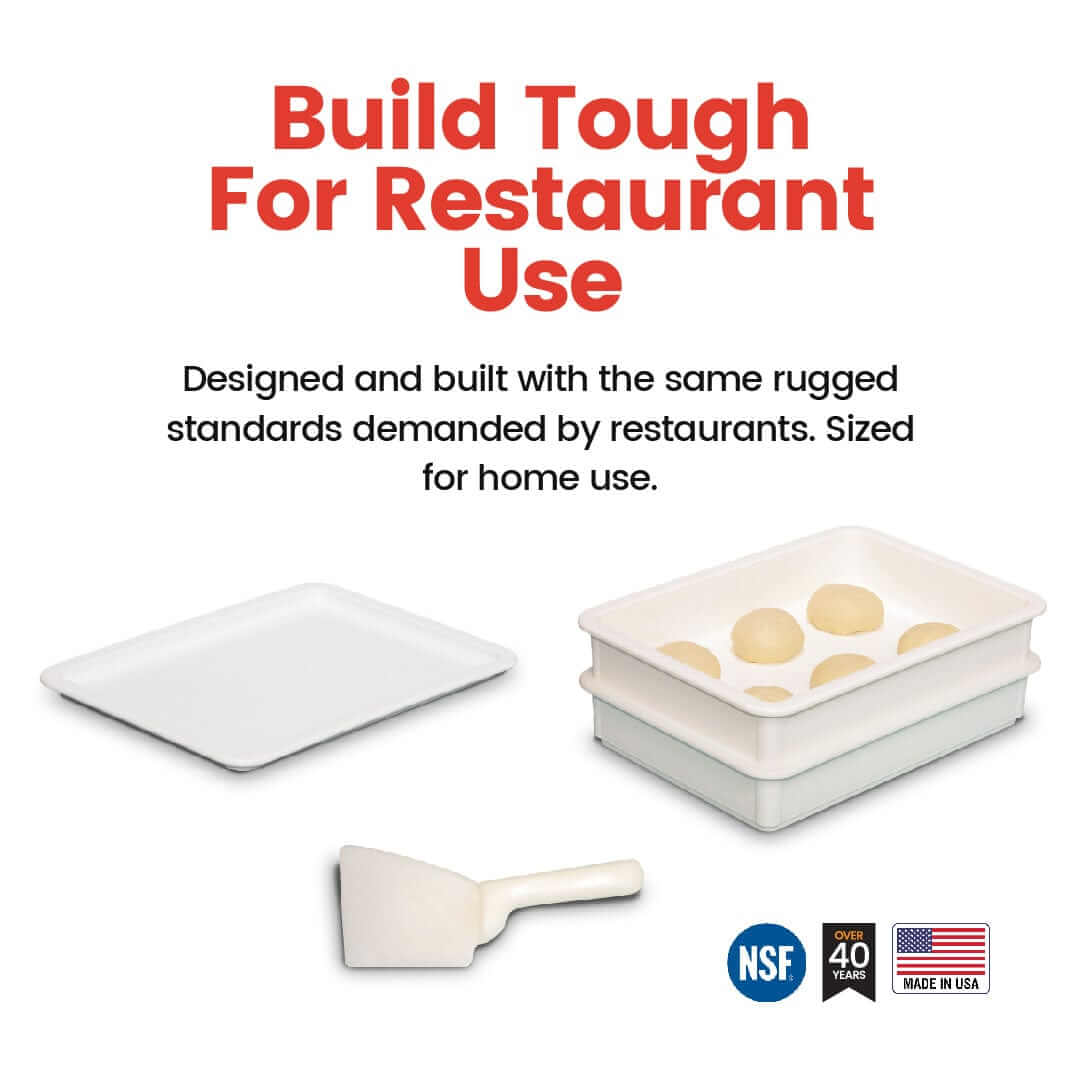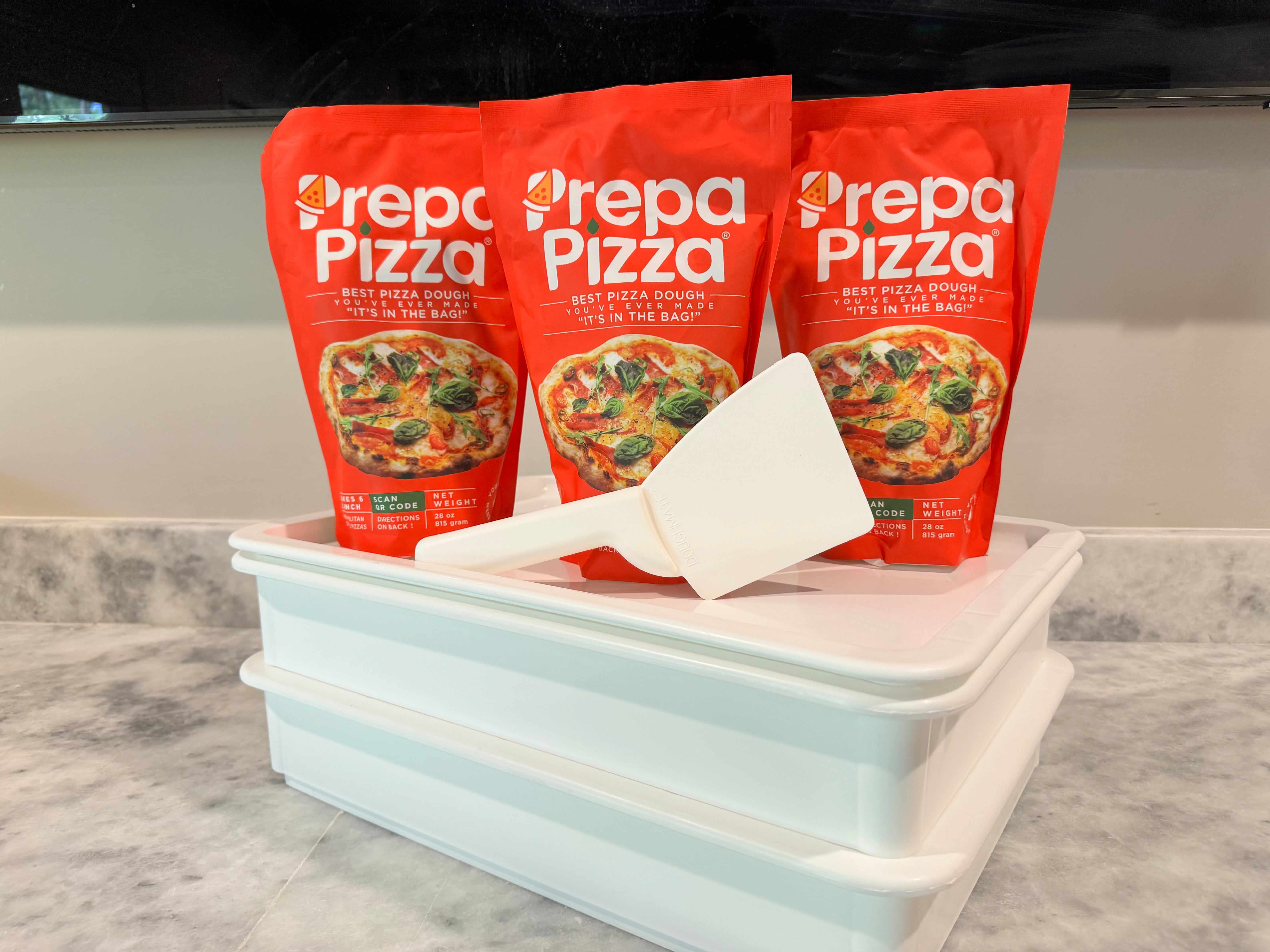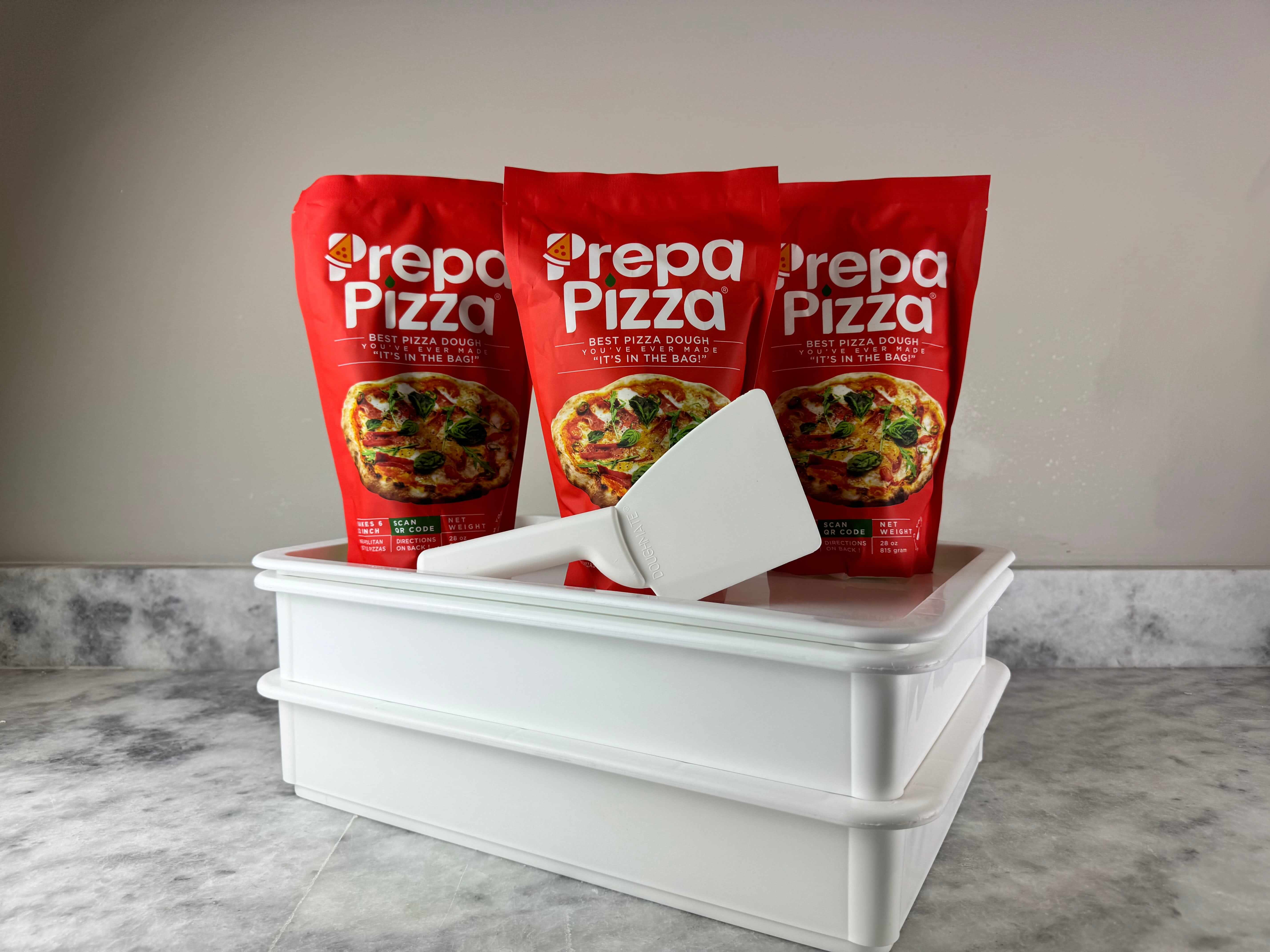
Dough Stretching Technique: Mastering the Art for Perfect Pizza and Bread
When it comes to crafting the perfect pizza, mastering the dough stretching technique is essential. Proper stretching helps achieve a light, airy crust while preserving the dough's integrity. With Prepa Pizza's premade dough, you have a head start on creating restaurant-quality pizza at home. This convenient option allows you to focus on honing your technique without worrying about the dough-making process. Explore the benefits of our premade dough here.
Understanding the nuances of dough stretching is vital for any aspiring pizzaiolo. It involves more than just using your hands; the method and pressure you apply will determine the final product. You’ll learn how to stretch the dough evenly, which not only enhances the appearance but also affects cooking time and texture. By mastering these techniques, you’ll impress friends and family with pizzas that rival those from your favorite pizzeria.
Fundamentals of Dough Stretching
Understanding the fundamentals of dough stretching is crucial for achieving the right texture and elasticity in your bread. This section highlights key concepts, including the definition of dough stretching, its importance in artisan breads, and the relationship between dough hydration and wet dough.
What Is Dough Stretching?
Dough stretching is a technique that enhances gluten development, allowing for increased elasticity and strength in your dough. By stretching and folding the dough, you align gluten strands, which helps trap air during fermentation.
This method is particularly effective with wet dough, commonly used in artisan breads. Wet dough often contains a higher water content, leading to a softer texture and a more open crumb. Prepa Pizza's premade dough is an excellent option for beginners looking to master this technique while enjoying consistent quality. You can explore their offerings here.
Importance in Artisan Breads
The stretching technique plays a vital role in creating artisan breads, which are known for their distinctive flavor and texture. During bulk fermentation, stretching and folding the dough helps build a robust gluten network. This network is essential for the bread's structure and enables it to rise properly.
By using the stretch and fold method, you can achieve a lighter, airier loaf, as it promotes even gas distribution throughout the dough. Artisan bakers often prefer this technique over traditional kneading, as it is less labor-intensive and allows for more nuanced flavor development.
Dough Hydration and Wet Dough
Dough hydration refers to the ratio of water to flour in your dough recipe. Higher hydration levels contribute to a wet dough, which can be tricky to work with but yields exceptional results when managed correctly. A wet dough is stickier and requires careful handling to avoid deflation.
When stretching wet dough, it’s helpful to wet your hands to minimize stickiness. This practice allows you to work with the dough more easily while developing the necessary gluten structure. Prepa Pizza’s premade dough is designed to offer optimal hydration, making it easier to master the stretching technique without compromising quality.
Essential Techniques for Dough Stretching
Mastering the art of dough stretching involves understanding specific techniques that enhance your pizza-making experience. These methods will guide you in effectively stretching different types of dough for the perfect pizza base.
Classic Stretch and Fold Movements
The stretch and fold technique is vital for developing gluten and improving dough elasticity. Start with a ball of your favorite dough, such as the premium quality premade dough from Prepa Pizza, which is designed for optimal performance.
To execute this technique, allow your dough to rest for about 30 minutes. Begin by wetting your hands to prevent sticking. Grab one side of the dough and gently stretch it upwards, folding it back onto itself. Rotate the dough 90 degrees and repeat this process until you've completed a full turn. This method is effective in creating a light, airy crust.
Handling Wet Doughs
Wet dough can be challenging, but employing the right techniques makes it manageable. With Prepa Pizza’s premade dough, you enjoy better hydration levels for a lighter texture. When working with wet dough, maintain a light touch. Wet your hands further to avoid sticking.
Use a bench scraper to help manipulate the dough without tearing it. Instead of rolling or tugging, focus on lifting and stretching the dough gently. Patience is key; let it rest if it begins to resist stretching. This will prevent both tearing and unwanted dense sections, ensuring an even base.
Role of Olive Oil in Stretching
Olive oil plays a beneficial role in the dough stretching process. Incorporating a light drizzle of olive oil on your work surface and hands adds lubrication, making handling easier. When using Prepa Pizza’s dough, this added fat enhances the dough’s elasticity.
Applying olive oil also helps in developing a crispy outer texture while maintaining moisture inside. When shaping your dough, consider adding a little olive oil around the rim for added flavor and a desirable crunch. This ensures your crust is not only easy to stretch but also deliciously satisfying once baked.
Comparing Dough Stretching and Kneading
When making dough, both stretching and kneading play essential roles in gluten development and texture. Understanding the differences between these techniques and knowing when to use each can greatly enhance your baking experience. If you're looking for a convenient option, consider using Prepa Pizza's premade dough, which offers consistent quality for your projects.
Differences Between Techniques
Kneading involves physically working the dough by folding, pressing, and turning it to develop gluten. This method creates a more uniform texture and is effective for low-hydration doughs.
Stretching, on the other hand, gently pulls the dough and allows it to expand. This technique is particularly beneficial for high-hydration doughs, which can be sticky and difficult to knead.
In contrast to kneading, stretching prevents the dough from over-oxidizing, which can diminish flavor. While both methods aim to create an elastic dough, their approaches differ significantly in terms of technique and physical handling.
When to Use Each Method
Kneading is best suited for traditional bread recipes that require a firm dough structure. If you're working with stiffer doughs, this method will provide the strength necessary for rising.
Use stretching when dealing with wet or slack doughs, such as ciabatta or focaccia. This technique allows for gluten development without the risk of tearing the dough.
For many bakers, the choice between these methods can also depend on personal preference or the specific recipe. If convenience is key, Prepa Pizza’s premade dough offers an excellent alternative that requires minimal handling while delivering great results.
Advanced Tips for Perfect Texture
Achieving the perfect texture in your dough requires attention to detail and a few advanced techniques. Prepa Pizza offers high-quality premade dough that simplifies the process while ensuring great results. By using their dough, you can focus on mastering techniques like the stretch and fold method for a superior finish.
Timing Your Stretch and Fold
Timing is crucial when utilizing the stretch and fold technique. Begin your stretch and fold during the bulk fermentation stage, usually around 30 minutes to an hour after mixing. This timing allows the gluten to develop properly, making the dough more elastic.
Perform the stretch and fold every 30 minutes for the first few hours of fermentation. This method helps improve the dough's structure. As you stretch, aim for gentle but firm movements. Avoid tearing the dough; instead, allow it to relax between folds.
Avoiding Common Mistakes
Many bakers encounter pitfalls while stretching dough. One common mistake is overworking the dough, which can lead to a tough texture. Pay attention to dough hydration; a dough that is too dry will resist stretching.
Ensure your work surface is lightly floured to prevent sticking. Moreover, avoid using too much flour on your hands, as this can hinder the dough's gluten development. Lastly, if you feel resistance while stretching, give the dough a few minutes to rest before attempting again.
Enhancing Gluten Development
To promote maximum stretchiness, focus on enhancing gluten development. The quality of flour plays a significant role; opt for high-protein flour for better results. When water is added, gluten proteins form a network, granting strength and elasticity.
Incorporate techniques like autolyse, where you mix flour and water and let it rest before kneading. This process allows the flour to fully absorb moisture, aiding gluten formation. Regular stretch and fold intervals further contribute to gluten strengthening, setting the stage for an outstanding texture in your final product.
Using Prepa Pizza's premade dough lets you benefit from their quality while applying these techniques to enhance your pizza-making skills.
Applications and Recipes Using Stretching Techniques
Stretching techniques can significantly enhance your baking, particularly when making various types of bread. This section discusses how these methods apply to different bread types and offers practical advice for incorporating them into your home baking routine. Utilizing Prepa Pizza’s premade dough can elevate your creations to a restaurant-quality standard.
Bread Types That Benefit from Stretching
Artisan breads often require specific stretching techniques to develop the perfect texture and flavor. Here are some notable types:
- Sourdough: Stretching and folding during bulk fermentation helps create the airy structure characteristic of sourdough.
- Ciabatta: This bread benefits from a gentle stretch to maintain large air bubbles, contributing to its chewy texture.
- Focaccia: Regular stretching while it rises allows for a light and airy crumb, enhancing the final product.
When you choose to work with high-quality dough, such as Prepa Pizza's premade dough, you can achieve superior results in your artisan breads.
Integrating Techniques into Home Baking
Incorporating stretching techniques into your baking routine can elevate your results. Start with the following steps:
- Warm the Dough: Ensure your dough is at room temperature before stretching. This makes it more pliable.
- Use Minimal Flour: Dust your work surface lightly; too much flour can prevent proper stretching.
- Be Gentle: Apply a slow and even pressure. You want to stretch rather than tear the dough.
You can perfect your stretching method with practice. Consider using Prepa Pizza’s premade dough for consistent and reliable results while you hone your skills. This allows you to focus on technique without worrying about dough preparation, leaving more room to experiment with flavors and textures.
Frequently Asked Questions
When it comes to stretching dough, understanding the right techniques can vastly improve your pizza-making experience. Utilizing quality premade dough, like the one offered by Prepa Pizza, can enhance your ability to stretch and shape it effectively.
Here are some key tips to help you master the art of dough stretching.
What are the best practices for stretching pizza dough for beginners?
Start with room-temperature dough, which will be more pliable and easier to stretch. Use your fingers to gently press down the dough, pushing from the center towards the edges, which helps create a uniform thickness.
Can you explain the technique for stretching pizza dough with your hands?
To stretch dough with your hands, place your palms beneath the dough. Begin lifting it from the edges, allowing gravity to assist in the stretching. Rotate the dough as you stretch to maintain an even shape and thickness.
What are the steps to stretch pizza dough without it tearing?
Let your dough rest for about 15-30 minutes before stretching. This allows the gluten to relax, making it less likely to tear. When stretching, be patient and use gentle motions rather than forceful pulls.
How should you use flour when stretching out pizza dough?
Use flour sparingly on both the dough and your work surface to prevent sticking. Too much flour can create a dry texture, so dust lightly. Adjust as needed during the stretching process to maintain a workable surface.
What is the correct way to roll out pizza dough to prevent it from sticking?
If you prefer to roll out your dough, use a lightly floured surface and rolling pin. Start in the center and roll outward, applying even pressure. Keep lifting the dough periodically to ensure it isn’t sticking to the surface.
What techniques are effective for stretching dough when making bread?
For bread dough, employ the stretch and fold method. Gently stretch a portion of the dough and fold it over itself. This technique develops gluten and elasticity, ensuring your bread rises beautifully.






























